Hi, friends! Welcome to Installer No. 57, your guide to the best and Verge-iest stuff in the world. (If you’re new here, welcome, happy Kindle Season to all who celebrate, and also you can read all the old editions at the Installer homepage.)
Technology
Apple iPhone 16 Pro Max vs iPhone 14 Pro Max: Upgrade time?
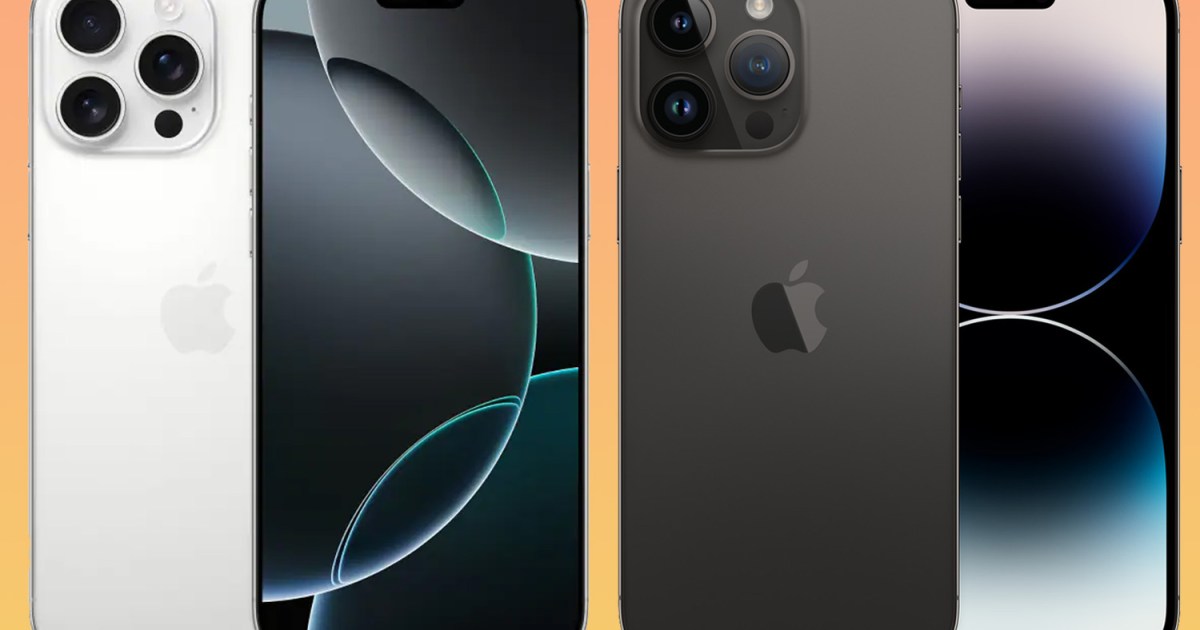
It’s been two years since Apple launched the iPhone 14 Pro Max, which ushered in a new era for Apple with the revamped Dynamic Island and the addition of an Always-On display (AOD). In the two years since, Apple has pushed on the Pro Max range to include not only these features, but also a range of new hybrid experiences. These include the Action Button — which replaced the Mute switch — and new for the iPhone 16 series, the Camera Control button, which helps unlock some of the new and upcoming features of the camera.
Then there’s the push for AI. In the two years since Apple launched the iPhone 14 Pro Max, the AI era has descended upon us, and the iPhone 16 Pro Max is one of the first iPhones built with Apple Intelligence in mind. If you’ve got an iPhone 14 Pro Max, is now the time to upgrade? Is the iPhone 16 Pro Max worth upgrading to? Let’s dive into the details.
Apple iPhone 16 Pro Max vs iPhone 14 Pro Max: specs
| Specs | iPhone 16 Pro Max | iPhone 14 Pro Max |
|---|---|---|
| Size | 163 x 77.6 x 8.25 mm (6.42 x 3.06 x 0.32 inches) | 160.7 x 77.6 x 7.9 mm (6.33 x 3.06 x 0.31 inches) |
| Weight | 227 grams (7.99 oz) | 240 grams (8.47 oz) |
| Screen | 6.9-inch Super Retina XDR OLED
1320 x 2868 pixels ProMotion with 120Hz dynamic refresh rate Dolby Vision, 2000 nits peak brightness |
6.7-inch Super Retina XDR OLED
1290 x 2796 pixels 19.5:9 aspect ratio (460 pixels per inch density) ProMotion with 120Hz dynamic refresh rate Dolby Vision, 2000 nits peak brightness |
| Operating system | iOS 18 | Upgradable to iOS 18 |
| RAM & Storage | 256GB, 512GB, 1TB
8GB RAM |
128GB, 256GB, 512GB
6GB RAM |
| Processor | Apple A18 Pro
Six-core CPU Six-core GPU 16-core NPU |
Apple A16 Bionic
Six-core CPU (2×3.46 GHz + 4×2.02 GHz) Five-core GPU 16-core NPU |
| Camera | Rear:
48-megapixel primary, f/1.8, 1/1.28″, OIS 48MP ultrawide, f/2.2, 120° FOV 12MP telephoto, f/2.8, 5x optical zoom Front: 12MP, f/1.9, 1/3.6″ |
Rear:
48MP primary, f/1.8, 1/1.28″, OIS 12MP ultrawide, f/2.2, 120° FOV 12MP telephoto, f/2.8, 3x optical zoom Front: 12MP, f/1.9, 1/3.6″ |
| Video | Rear:
4K, up to 120fps Front: 4K, up to 60fps |
Rear:
4K, up to 60fps Front: 4K, up to 60fps |
| Connectivity | Wi-Fi 7, dual-band
Bluetooth 5.3 |
Wi-Fi 6, dual-band
Bluetooth 5.3 |
| Ports | USB-C Gen 3.2
DisplayPort |
USB-C Gen 3.2 |
| Water resistance | IP68 (maximum depth of 6m up to 30 minutes) | IP68 (maximum depth of 6m up to 30 minutes) |
| Battery & charging | Details of battery capacity to be confirmed
Wired via USB-C, up to 30W 25W wireless charging via MagSafe 15W Qi2 wireless charging |
4,323mAh battery
Wired via USB-C, up to 15W 15W wireless charging via MagSafe |
| Colors | Black Titanium, White Titanium, Natural Titanium, Desert Titanium | Space Black, Silver, Gold, Deep Purple |
| Price | Starts at $1,199 | Starts at $1,099 |
Apple iPhone 16 Pro Max vs iPhone 14 Pro Max: design and display

Look at the back of these two phones at a distance and you’ll be hard-pressed to spot the differences. However, get closer and you’ll begin to realize that they’re not the same.
This is most obvious with the titanium build; the iPhone 16 Pro Max retains the titanium build launched last year, while the iPhone 14 Pro Max uses an older stainless steel body As a result, the iPhone 16 Pro Max is 13 grams lighter than the iPhone 14 Pro Max. There are also much slimmer bezels, with those around the display measuring just 1.15mm. This has enabled Apple to add a 0.2-inch larger display in a similar-size body.
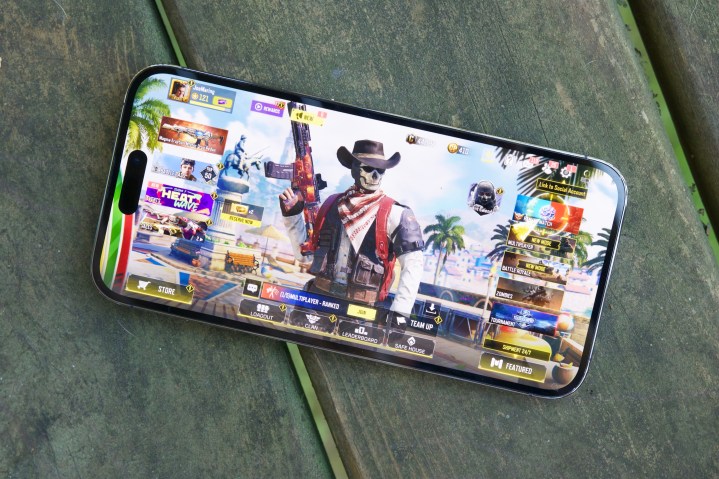
There’s a pronounced difference in the thickness as well, and if you upgrade to the iPhone 16 Pro Max, you may notice it’s a tiny bit thicker. It doesn’t make a big difference in day-to-day use, but it is noticeable when comparing the two. Alongside the frame on both devices, you’ll notice the lack of a SIM card tray: if you were annoyed by the switch to eSIM exclusively with the iPhone 14 Pro Max, the iPhone 16 Pro Max won’t fare any better in your estimation.
One of the benefits of the Apple ecosystem has been the wide range of accessories, and their compatibility with future versions of the iPhone. The iPhone 14 Pro Max uses the Lightning connector, and any accessories you have for your phone won’t work with the iPhone 16 Pro Max. This is because it uses the USB-C standard, which all iPhones since the iPhone 15 series have used.

On the sides of the phones are where you’ll also notice some big differences. The iPhone 16 Pro Max has the Camera Control button, which was launched this year, and the Action Button that debuted last year with the iPhone 15. The former is hit-and-miss, but the latter transforms a simple mute switch into an easy way to open apps, run shortcuts, or quickly launch the flashlight or camera. Of course, it can also still function as a Mute switch.
These two phones look and feel very similar, and that’s because the iPhone experience is largely the same. However, the iPhone 16 Pro Max has enough changes — the Action Button, Camera Control button, the titanium build, and the USB-C port — to make the upgrade worthwhile.
Apple iPhone 16 Pro Max vs iPhone 14 Pro Max: performance and battery

The iPhone 14 Pro Max is powered by the A16 Bionic processor, which is built on TSMC’s 4nm process, while the iPhone 16 Pro Max runs the latest A18 Pro chipset, built on the second-generation 3nm process. These may seem like just numbers, but they make a difference in two key areas: gaming and AI.
Across many benchmarks, the A18 Pro chipset regularly achieves a 20% advantage over the A16 Bionic chipset. If you’re a gamer, you’ll find the upgrade worthwhile as the iPhone 16 Pro Max can run AAA games like Assassin’s Creed and Resident Evil 4. Apple stepped up the gaming performance with last year’s iPhone 15 Pro Max — powered by the first Pro chipset for the iPhone — and the iPhone 16 Pro Max continues this trend.
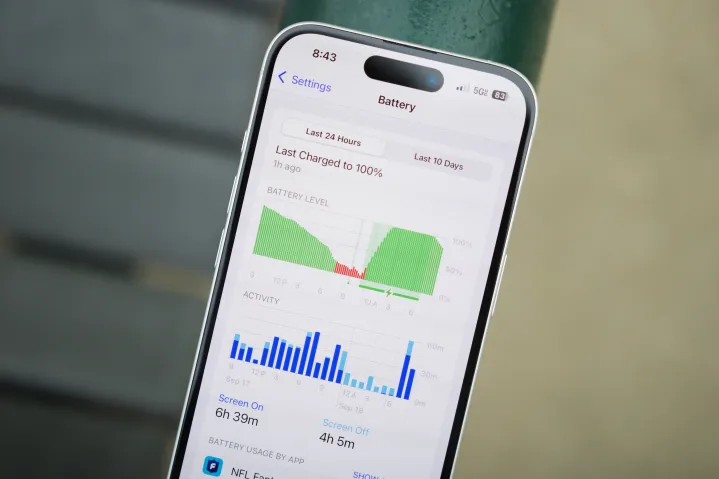
The iPhone 14 Pro Max has a smaller battery than the iPhone 16 Pro Max, and you can expect battery life to be improved with the newer phone. However, the iPhone 15 Pro Max was a step back from the 14 Pro Max, and it remains to be seen how the iPhone 16 Pro Max battery develops over time. Based on limited testing so far, you can expect around two hours of extra battery life.
Despite the change from Lightning to USB-C, both batteries charge at similar speeds, requiring around an hour and a half to charge to full when plugged in. However, the iPhone 16 Pro Max is much faster at charging wirelessly and supports the latest MagSafe and Qi2 charging standards.
This is a much closer battle, but the iPhone 16 Pro Max is more future-proofed than the iPhone 14 Pro Max. The A18 Pro chipset enables the AI-powered future of the iPhone, and the A16 Bionic can’t keep up. It’s also already missing out on Apple Intelligence.
Apple iPhone 16 Pro Max vs iPhone 14 Pro Max: software and updates
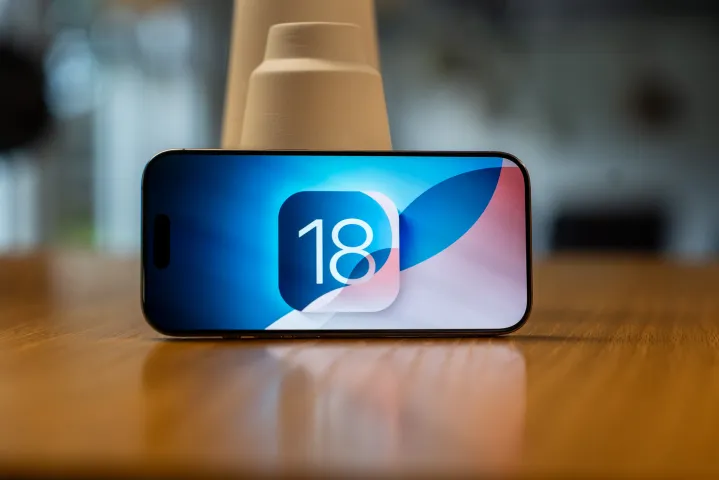
Unless you’ve been living under a rock, you’ll know Apple has unveiled its take on AI. Dubbed Apple Intelligence — see what they did with the initials? — it’s the future of the Apple ecosystem, and the iPhone 14 Pro Max won’t get it. If you want AI on your iPhone, you’ll need to upgrade.
Do you need Apple Intelligence? While some of the generative features will likely lose their appeal quickly, many of the personal features have practical uses at work or home. In particular, AI-powered summaries of Notes, Emails, webpages, group chats, and notifications from any app will make it easier to read, digest, and react to anything that happens in your daily life.
Then there are Writing Tools to help improve your writing, summarize information, and make you appear more professional or personable in your tone. If you struggle with written communication, Apple Intelligence — and therefore the iPhone 16 Pro Max — could prove a worthwhile upgrade.

The rest of the iOS 18 feature set is available on both devices, so you won’t notice a marked difference with the iPhone 16 Pro Max, except for Apple Intelligence. That means you’ll still get the same home screen customization and theming, reactions and tapbacks in iMessage, a customizable control center, and much more. These are just some of the top reasons to update to iOS 18.
Apple has committed to a minimum of five years of updates for both phones, meaning the iPhone 14 Pro Max will be supported until at least 2027, and the iPhone 16 Pro Max till at least 2029. The latter launches on iOS 18, while you can update the iPhone 14 Pro Max to the newest OS right now.
Newer is usually better, and in this case, the ability to run AI makes the iPhone 16 Pro Max a worthwhile upgrade.
Apple iPhone 16 Pro Max vs iPhone 14 Pro Max: cameras

The iPhone 16 Pro Max camera is similar to that of the iPhone 14 Pro Max, except for improvements in three areas: the addition of the Camera Control button, a larger 5x zoom, and a better Ultrawide camera. Collectively, these enable a range of improved camera experiences for the iPhone.
Both phones feature a 48MP main camera, although the iPhone 16 Pro Max uses a Fusion camera that uses pixel binning to capture 24MP high-resolution images and a sensor crop to enable a 2x cropped-zoom. The ultrawide camera has also been improved from 12MP on the iPhone 14 Pro Max to 48MP on the iPhone 16 Pro Max. The latter has a smaller pixel size at 0.7 micrometers (versus 1.4µm), but the higher resolution and better light capture should mean slightly improved overall ultrawide photos.
The biggest difference in the camera is in the third lens. The iPhone 14 Pro Max features a 12MP telephoto camera that offers 3x optical zoom, while the iPhone 16 Pro Max uses the same periscope camera with 5x optical zoom that launched on the iPhone 15 Pro Max. Functionally, the iPhone 16 Pro Max has strong zoom capability throughout the 1x to 5x zoom ranges, while the iPhone 14 Pro Max is more limited above 3x.
If you switch to the iPhone 16 Pro Max from the iPhone 14 Pro Max, you may find the Camera Control button perplexing. It’s a physical button with a capacitive sensor underneath that allows you to swipe, press, or use gestures to control different aspects of the camera, such as the zoom, camera mode, and pro controls. It’s not the most intuitive, but it’s a unique camera experience considering only Sony also puts a camera shutter button on its phones.
This is another fairly close category. While the improvements in the iPhone 16 Pro Max aren’t extensive, they do improve the overall camera experience. In particular, the periscope lens on the iPhone 16 Pro Max is significantly better as it also uses 3D sensor-shift OIS for improved stabilization when taking photos and videos.
Apple iPhone 16 Pro Max vs iPhone 14 Pro Max: price and availability

The iPhone 14 Pro Max and iPhone 16 Pro Max share one common trait: at launch, they were the most expensive iPhone you could buy. The iPhone 14 Pro Max launched at $1,099 for 128GB of storage — with the 256GB costing $1,199 — while the iPhone 16 Pro Max starts with 256GB of storage at the same $1,199 price tag. One big difference is the maximum storage: the iPhone 14 Pro Max is limited to 512GB, while the iPhone 16 Pro Max is available in a 1TB model.
The iPhone 14 Pro Max comes in four colors: Silver, Space Black, Gold, and Deep Purple, all with a stainless steel frame. Meanwhile, the iPhone 16 Pro Max uses a Titanium build and is available in Natural Titanium, Black Titanium, White Titanium, and the new Desert Titanium color.
Apple iPhone 16 Pro Max vs iPhone 14 Pro Max: verdict

It’s only been two years since the iPhone 14 Pro Max was released, but the iPhone 16 Pro Max has been upgraded in many ways.
It is bigger and thinner, has smaller bezels, and boasts a newer processor that delivers gains in CPU, GPU, and neural processing unit (NPU) performance for better gaming and AI performance. The camera has been improved throughout, especially in the zoom category, while the battery life should be slightly improved as well.
The iPhone 14 Pro Max is still a very capable phone, however. Although two years old, it still delivers a flagship experience. The iOS 18 update delivers all of the same benefits, but it won’t run Apple Intelligence, so it is already lacking in terms of future-proofing.
Ultimately, if you’re upgrading from the iPhone 14 Pro Max to the iPhone 16 Pro Max, you’ll get a far more customizable experience that’s also extremely familiar. You’ll also get the latest and greatest that Apple has to offer in the iPhone, but with many Apple Intelligence features not launching until next year, you may also want to wait until the iPhone 17 next year.
Technology
iPad Mini and Kindle Colorsoft are reading gadgets worth upgrading for
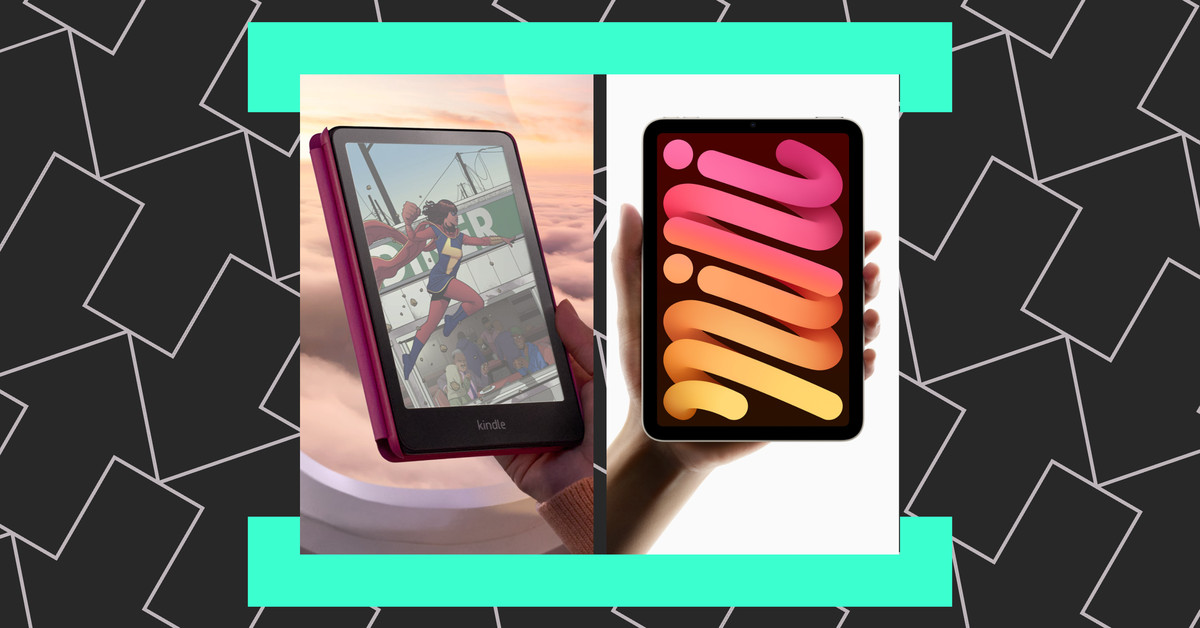
This week, I’ve been reading about sports betting and designer proteins and the Ford Bronco, listening to Bon Iver’s new Sable and Brian Eno’s old Music for Airports on repeat, watching Archer and Unstable, desperately trying to find a better controller for the Nintendo Switch, and finally seriously making plans to build a whole seltzer system into my kitchen counter. It’s just time.
I also have for you an unusually gadget-heavy week: new Kindles, new iPads, new retro game consoles, and much more. Oh, and I forgot to mention this last week, but The Verge is hiring for a couple of really cool jobs, including a senior tech editor and a deputy editor overseeing our reviews and commerce programs. You should apply! Can confirm this is an awesome place to work. And if you have questions about either role, hit me up.
Anyway, gadget time. Let’s do it.
(As always, the best part of Installer is your ideas and tips. What are you watching / playing / reading / trying this week? What should everyone else be into as much as you are? Tell me everything: installer@theverge.com. And if you know someone else who might enjoy Installer, forward it to them and tell them to subscribe here.)
The Drop
- The Kindle Colorsoft Signature Edition. I suspect the new Paperwhite will actually be the right new Kindle for most people (and it is really nice), but there’s something about the color model that is just so enticing. Particularly if you’re a comics reader, this thing looks like a winner.
- The new iPad Mini. I’ve always hoped Apple would decide to do something awesome and new with the iPad Mini. And Apple never does. But I love the Mini all the same, and at the very least, this one is a thoroughly modern iPad that can do every iPad thing. I’ll take that.
- The DJI Air 3S. The new midrange drone in DJI’s lineup has a bunch of nice upgrades but really only one purpose: to work well in the dark. The 3S is built to fly safer, capture better images, and return home more easily, all without being able to see very well. It sounds very fun and also like a very good way to prank your friends. I’m just saying.
- The Sonos Arc Ultra. Yeah, the app sucks, but Sonos still makes great-sounding stuff. And I think if you’re going to buy one piece of home stereo gear, a soundbar is the way. If the surround-sound tech works half as well as the company says, this one’s a winner.
- The Analogue 3D. I have been waiting for Analogue’s Nintendo 64 console for what feels like forever, and this 4K upscaling machine is exactly what I hoped it’d be. It doesn’t ship until next year, and you can’t preorder it until Monday, but I’m telling you now because I’d bet good money it’ll sell out in a hurry.
- Fanatical: The Catfishing of Tegan and Sara. Maybe I’m still in a 2004-y mood, so anything Tegan and Sara catches my eye, but this is a wild story: about a specific identity theft, about what happens when fandom gets weird, and so much more.
- Eater for iOS. This is exactly what I can never get Google Maps to be: just a million maps of cool, good restaurants. Eater’s taste often skews a little fancy and expensive, but I’ve rarely gone wrong trusting its recommendations. (I suppose I should disclose that Eater is part of Vox Media, as is The Verge, but also I just really like this app so far.)
- Shrinking season 2. One of my favorite shows of the last few years is back! If you haven’t watched the first season of this show that is somehow both very bleak and very funny, you should. And then you should watch the second season immediately and tell me all your thoughts. I’ll be ready.
- Super Mario Party Jamboree. I think Mario Party 64 might be my all-time most-played video game. (It’s either that or GoldenEye.) This new entrant in the series adds lots of new minigames and some really fun-looking new boards — it looks like a perfect group game.
Screen share
I think it’s still the case that Adi Robertson is the employee at The Verge who has worn the most AR and VR headsets. Is that a cool distinction or a horrifying one? Who knows! But the internet is filled with pictures of Adi wearing face-puters. Now, she runs our policy desk and is thinking an awful lot about how we ought to regulate, use, and make sense of all the technology in our lives. Also something about an election in a few weeks? Not sure what that’s about.
Here’s Adi’s homescreen, plus some info on the apps she uses and why:
The phone: Samsung Galaxy S24.
The wallpaper: My lockscreen is a rotating slideshow of my seven-month-old because I am That Mom now. My homescreen is the Continuous Monument, which is a satirical sci-fi architecture concept from the 1970s avant-garde firm Superstudio — it’s part of a series of illustrations of a huge, sterile, grid-like arcology lacing across the entire world. Sort of like a huge version of Saudi Arabia’s The Line project, except nobody was supposed to actually build it.
The apps: Libby, Google Authenticator, Amazon, The New York Times, Simplenote, Google Messages, Bluesky, Feedly, Slack, Clock, Camera, LastPass, Paprika, Phone, Wikipedia, Google Photos, Google Calendar, Google Drive, Stash2Go, Okta Verify, LibraryThing, Files, Spotify, Signal, Gmail, Firefox, Google Maps.
I have a lot of inertia in my homescreen; I kept Google Hangouts on there for months after it shut down. I also added some stuff after becoming a parent — I ordered from Amazon maybe twice a month until I had a tiny creature constantly going through diapers and formula and random items I didn’t realize babies needed.
Libby: While I fully support the idea of library-managed controlled digital lending, I can’t deny the convenient pipeline of borrowing a book from the New York and Brooklyn public libraries through Libby and having it appear instantly on my Kobo reader. You got me, public-private tech partnerships. Sometimes you’re good.
Paprika: In an era of link rot and paywalls, this is the best service I’ve found for opening a recipe on the internet, downloading a personal copy, and keeping it permanently on my phone for reference. (There’s also a desktop version.) It’s simple, no-nonsense, and includes a calendar for planning meals and an easy grocery list feature.
Stash2Go: I don’t knit as much as I used to (infants and giant needles present some obvious problems), but I’m an avid Ravelry user, and when I started knitting, this was the best third-party app I found. It maintains most of the site’s powerful pattern search options while letting me upload pictures of my projects.
Bluesky: When Twitter’s user base started splintering, I wasn’t sure Bluesky would make it! But my initial choice, Mastodon, started feeling like a chore — I’m happy for the people who love it and I hope it flourishes, my feed just filled up with one too many arguments over the ideological valence of search options and quote posts. At this point, some of my favorite Twitter communities (like tech policy Twitter) have migrated to Bluesky, and it’s become a good way to keep up with what’s going on.
LibraryThing: With absolutely no disrespect to the creator of LibraryThing: I do not like LibraryThing. I do not like the complicated sorting and annotation features I never use. I do not like that, half the time, adding a book to my library requires restarting the app. But I like keeping track of the books I’ve read, and Goodreads — with its review bombing, its harassment potential, its attempts to make me share my reading history — just feels gross. If you have a less janky alternative, please let me know.
Feedly: I keep up with news and essays on RSS. I got a Feedly account when Google Reader shut down. It works pretty well, and I’m happy with it. I am a simple woman, set in my ways.
Wikipedia: This is my Instagram. I’ve lost hours scrolling it. My current tabs include Charlotta Bass (the first Black woman to own and operate a US newspaper), Daigo Fukuryū Maru (the Japanese fishing boat, contaminated with radioactive fallout in the 1950s, that partially inspired Godzilla), and the 1995 Raven Software first-person shooter Hexen: Beyond Heretic, which I have never played.
I also asked Adi to share a few things she’s into right now. Here’s what she sent back:
- I’m currently reading The Book of Elsewhere by Keanu Reeves and China Miéville. I’ve barely started, but I generally like Keanu Reeves’ taste, and China Miéville is one of my favorite authors, so a collaboration between them is too delightful a prospect to miss.
- I’m currently watching the long-awaited Adult Swim adaptation of Uzumaki. Like a lot of viewers, I enjoyed the first episode and felt a bit burned by the later animation quality decline, but so far, it’s doing a pretty good job of compressing a massive volume of creeping horror into a few hours of anime.
- I’ve just finished playing Dredge, a cozy fishing game about catching eldritch abominations to find arcane artifacts that will bring about the end of the world. I could use some more variety in the minigames and side missions, but as premises go, it’s extremely my thing.
Crowdsourced
Here’s what the Installer community is into this week. I want to know what you’re into right now as well! Email installer@theverge.com or message me on Signal — @davidpierce.11 — with your recommendations for anything and everything, and we’ll feature some of our favorites here every week. For even more great recommendations, check out the replies to this post on Threads.
“I’ve found and been playing a whole lot of Codenames, a new app version of the board game. It is incredibly well-thought-out, with lots of fun variations and cool ideas. It’s also a one-time purchase, which I really appreciate!” – Joel
“Some former Pitchfork folks started their own thing called Hearing Things and started it off with a killer playlist of the best music of the decade so far. And before anyone asks — yes, they do have a ‘blog’ section.” – Christine
“I just finished Hideo Yokoyama’s Six Four. It has to be the weirdest, most unique crime fiction I’ve ever read. Highly recommend it.” – Laszlo
“I really like DuckDuckGo AI Chat, which includes the ChatGPT, Claude, Llama, and Mixtral models, where chats are private and are never saved or used to train AI models. As a privacy-focused user, I find this really helpful.” – Shyam
“Charli XCX’s Brat remix album — the hottest guest lineup since the pandemic.” – Dariusz
“It’s dumb, overpriced, and over-engineered. I just got three of these Simplehuman trash cans for my bathrooms. It’s built like a tank, and these things will go with me to my grave.” – Brian
“Here’s a fun game you should look into: the studio is called Rusty Lake, and they have 15–20 point-and-click games that all are connected to an overall story. It deals with murder, reincarnation, and family, and they’re really good! I would start with Paradox because that’s the one I started with.” – Levi
“Discovered Netflix has a Minesweeper in their games catalog. It’s nothing special, but it’s a solid, polished version of the game, and it’s been my default mobile game for the last week.” – Justin
“Been on an Ursula K. Le Guin kick and reading The Dispossessed. It goes deep into thinking what a society based on anarchist principles would be like, plus tons of mid-century sci-fi goodness.” – Richard
Signing off
I’m sure (or at least I hope) I’m the 9,000th person to tell you to watch Cabel Sasser’s talk from the XOXO conference this year. Honestly, most of the talks from XOXO are great if you care about the internet and creativity and art and stuff, but Sasser’s was my favorite. I promise you will never guess where it’s going, and I promise it’s worth the journey. I’m working on seeing the world more like Wes Cook.
Technology
The latest Samsung Galaxy S25 leak hints at the dimensions for all three phones
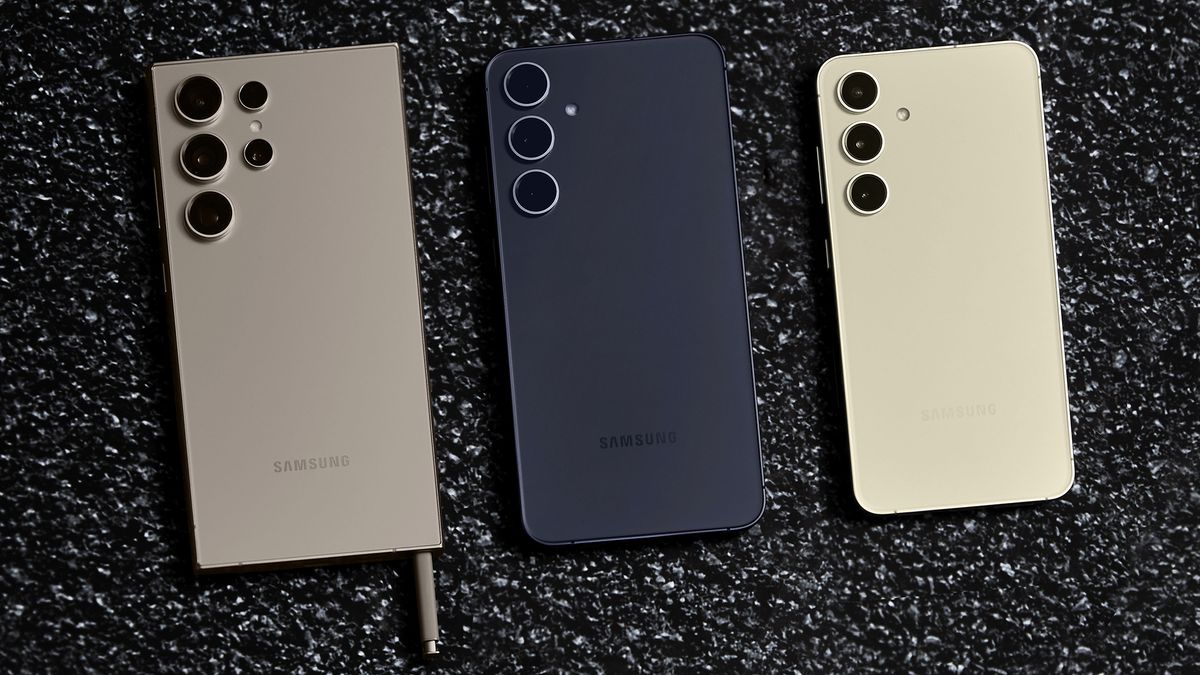

The Samsung Galaxy S25 leaks continue to trickle out, and we now have what are supposedly the full dimensions of all three phones in the series: the standard Galaxy S25, the Galaxy S25 Plus, and the Galaxy S25 Ultra.
This information comes from the usually reliable Yeux1122 (via @Jukanlosreve), who says the standard Galaxy S25 will have dimensions of 146.94 mm x 70.46 mm x 7.25 mm. That compares to 147 mm x 70.6 mm x 7.6mm for the Samsung Galaxy S24.
Then we have the larger Galaxy S25 Plus, which will apparently measure 158.44 mm x 75.79 mm x 7.35 mm. The dimensions of the current Samsung Galaxy S24 Plus, for comparison, are 158.5 mm x 75.9 mm x 7.7mm.
Lastly, there’s the largest of the lot, the Galaxy S25 Ultra. The dimensions of this handset are said to be 162.82 mm x 77.65 mm x 8.25 mm, and those measurements compare to 162.3 mm x 79 mm x 8.6 mm for the Samsung Galaxy S24 Ultra.
Matching previous leaks
Final detailed dimensions of the Galaxy S25 seriesS25 146.94 x 70.46 x 7.25 mm(* S24 147.0 x 70.6 x 7.6mm)S25 + 158.44 x 75.79 x 7.35 mm(* S24 + 158.5 x 75.9 x 7.7mm)S25 U 162.82 x 77.65 x 8.25 mm(*S24 U 162.3 x 79.0 x 8.6mm)Source: yeux1122October 19, 2024
As you can see from those comparisons, there’s not going to be a whole lot of difference in terms of sizes for next year’s models – though each one is going to be thinner than the Galaxy S24 model it’s replacing.
They’re also more or less the same as the measurements that have been mentioned in previous rumors, adding to the likelihood that these figures are right. The phones are expected to be revealed in January, a year after the Galaxy S24 series.
Just a couple of days ago we saw a leaked image featuring dummy units of all three Galaxy S25 phones, another indicator that the shapes and sizes will match up with the current models (though perhaps have slightly thinner bezels).
There remains some debate about the internals of the Galaxy S25, the Galaxy S25 Plus, and the Galaxy S25 Ultra, however – with most rumors now suggesting they’ll all come running the Snapdragon 8 Gen 4.
You might also like
Technology
These are my favorite leather iPhone 16 cases
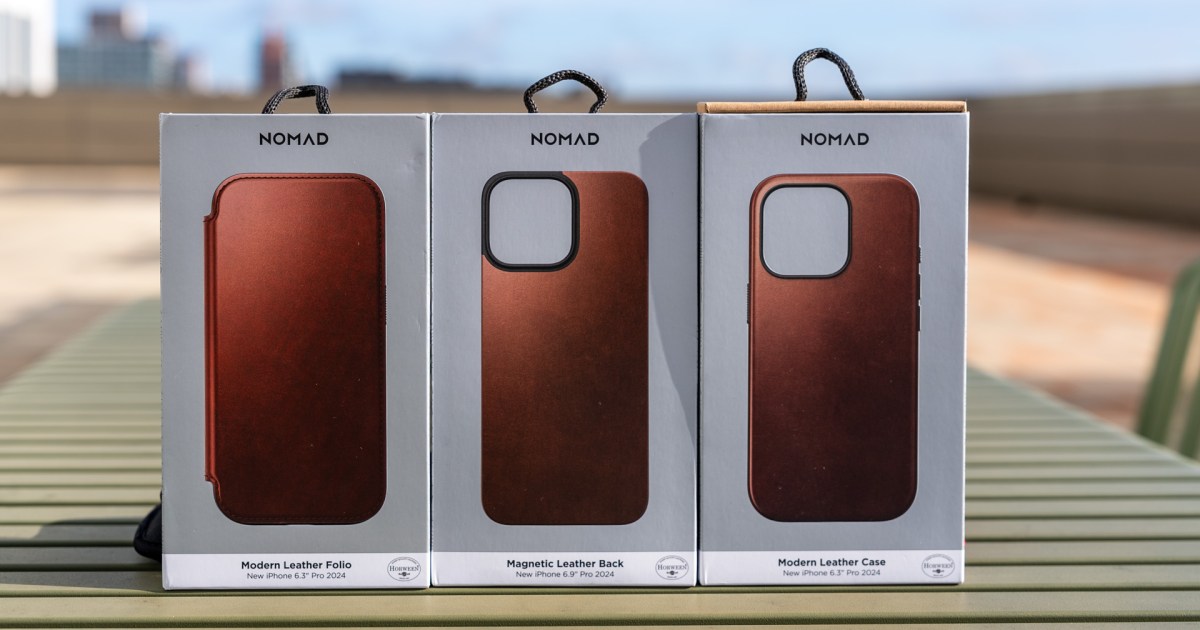
If you’ve bought an iPhone 16, you’ll know that there are hundreds of cases for the iPhone 16 series. Whether it’s the regular iPhone 16, the iPhone 16 Pro, or even previous iPhones, an entire ecosystem is dedicated to building the best accessories for the iPhone 16.
Sure, you can buy something from Apple, and for many years, the company offered many cases in its stores. And it still has a range of items in a range of materials, except for one: leather.
Thankfully, there’s an alternative. Many companies offer leather cases — including Mujjo, which has great sustainability chops — but none have the variety of cases that Nomad does.
The naked leather case alternative for the iPhone

The iPhone 16 Pro Max is a big phone, and while I love the more compact iPhone 16 Pro as my day-to-day iPhone, I sometimes go for the bigger iPhone. I’ve already written about the best thin case for my iPhone 16 Pro, but for the Pro Max, I wanted something different.
How do you make the big iPhone truly stand out from the rest, especially since it lacks the vibrant pop of the regular iPhone? Enter the Nomad Magnetic Leather Back.

It’s the leather equivalent of a Dbrand skin, and a way to truly make your phone stand out. The magnetic attachment isn’t perfect, but it’s fun and unique. It’s ideal if you want an almost-naked experience, as there’s no case around the sides. It’s a slim leather back for your phone, and it probably won’t protect your phone that much in a drop. Still, if you want to spruce up your iPhone while adding as little bulk as possible, it’s a fun and unique solution.
The more traditional leather iPhone case

The Magnetic Back isn’t for everyone, and there are times when I prefer a proper leather case instead. This is where Nomad’s traditional leather case comes in; it’s the leather iPhone case that Apple should have made, and it’s the perfect replacement for Apple’s own.
Nomad’s lineup is a little confusing, and the product you receive differs in a few key ways. If you’re going for the modern leather case like the one seen here, you’ll get a leather back reinforced by a plastic frame that offers eight feet of drop protection. The traditional leather case takes a full wrap approach but lacks the protection rating.
Both styles also come in several shades, and I like the lighter English Tan Nomad Leather. Not all options are available for each iPhone 16 model, although if you have the iPhone 16 Pro or Pro Max, you should be able to choose from the widest selection.
To Horween, or not to Horween?

Nomad is unique as it has two distinct leather styles: Horween Leather and “Our New Leather.” They are vastly different and appeal to two entirely different sets of people, and which one you should buy depends on what’s more important to you.
Horween Leather comes from a partnership with the synonymous company from Chicago; the Nomad Leather is from Dannish Tannery Ecco. The former is made by hand, is softer, and develops a patina much faster, while the latter uses computers to ensure a more consistent and uniform design that develops a patina slowly over time.
Horween Leather has a stronger leather smell, while the Nomad Leather is less fragrant. Having tried both styles, I love the richness of the Horween Leather, but I prefer the Nomad Leather as it doesn’t scratch or mark as easily.
It’s all about the leather, leather, leather

If you want an Apple accessory made from leather, there’s a strong chance you’ll find a Nomad option. I’ve had a few of these, and they’re all fantastic. The Passport Wallet Pen Edition is a great way to store your passport when traveling. There are also a few great options for wallets, cardholders, and cases for the Apple Watch and AirPods.
There is also a range of other leather iPhone cases. I’ve tried the leather folio case, and the detachable magnetic clasp is a novel approach to designing a folio for everyone. Similarly, there’s a huge selection of Apple Watch bands. From the traditional Modern Leather band to the Modern Slim Band, there’s a lot to choose from.
Apple may no longer make leather iPhone cases, but when Nomad’s options are this good, that’s fine.
Technology
Why Android Is Leading the Mobile Gaming Movement?
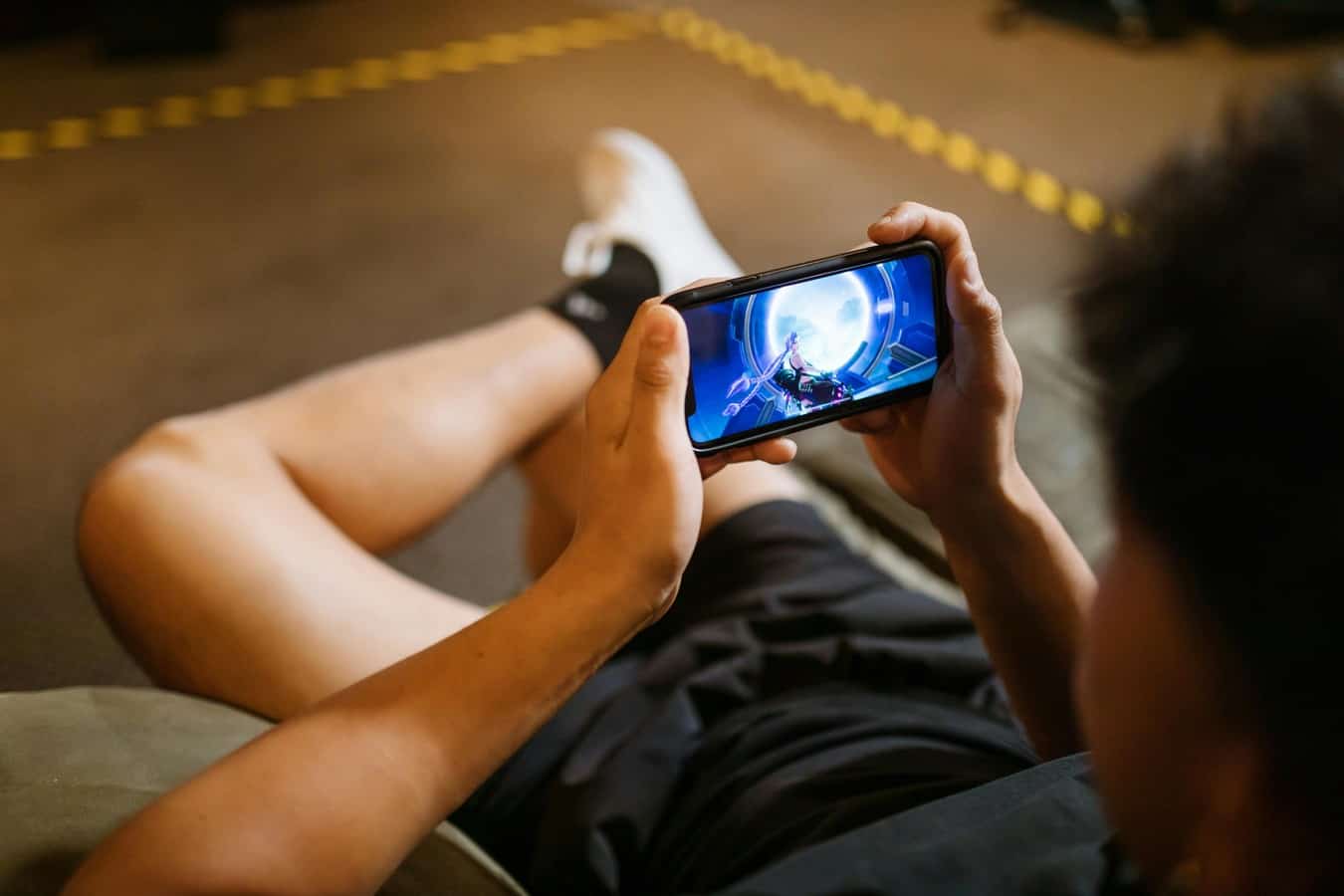
Gaming only continues to prove its success as an entertainment medium as it moves from strength to strength. As developers and studios find more immersive and inclusive ways to play, the world of video game entertainment makes its way into more people’s lives.
It is no longer the hobby of computer fanatics and children, as it slowly becomes a mainstay of many homes. This is in no small part due to the range of gaming experiences offered by Android mobile devices, such as tablets, smartphones, and smartwatches. This handheld and affordable tech has created unique and innovative ways to play for many new players.
The advent of Android gaming
In the early days of video games, a large computer was needed. The software would often demand clunky hardware that could set the player back a significant amount of money. As hardware developed, however, and became more commercially available, computers grew smaller, featuring much more in people’s homes, offices and schools.
Going handheld
Now we have smartphones, tablets, smartwatches, and many other android devices in our pockets and homes. These versatile pieces of tech are capable of playing a huge range of games, from quick cookie cutter games like Candy Crush, to much loved 3D RPGs, and even online casino games, such as the ones available in this guide, offering players a variety of no-deposit bonus options for an exciting gambling experience.
Android devices have brought the capabilities of gaming to many people who would probably never have touched a console before. Quick, simple, and easy to understand games have opened up mobile gaming for millions across the world, bringing more players than ever to the format.
PC gaming
With the introduction of commercially available computing came the ability to play computer games at home. However, they were still a niche entertainment, requiring some level of computing knowledge, and were reserved mostly for enthusiasts. Gaming was still something that existed mostly in the realms of arcades and computing culture.
The introduction of the console
However, when arcade boxes were made smaller, and consoles finally hit the market, gaming all of a sudden became something that could exist, unobtrusively, in the family TV room. Gaming was here to stay. Despite the meteoric rise in popularity from this point, it was still seen as an entertainment for children.
More than a few titles
There are many Android games out there to be played on phones and tablets that have become household names.
1. Pokémon GO: Use your smartwatch to track nearby Pokémon, hatch eggs, and collect items.
2. Minecraft: Receive notifications about game events and chat messages.
3. Candy Crush: Connect the various candies to earn points and bonuses.
4. Ingress: Track portals, capture territories, and receive mission updates.
5. Asphalt 9: Legends: Receive notifications about races, challenges, and social interactions.
What makes Android so special
Android has pioneered the movement in mobile gaming, allowing developers and tech companies alike to focus on gaming. Unlike Apple, Android is a much more open software, allowing developers significantly more freedom to create what they want.
Affordability
One of the driving forces behind the rise of the gaming population, especially through mobile platforms, is the affordability of many Android devices. Of course, it is possible to spend a small fortune on the top of the line, flagship Android models, but it isn’t necessary.
Many Android phones are the preferred brand due to their price. They can be picked up cheaply, especially when compared to the cost of a console or PC. With their current hardware, even cheap Android devices are capable of playing a huge array of games.
Emulation and software
Many tech companies, such as Apple, are very protective of their code and software. This ensures that they have a stranglehold on any new programs that are released. By doing so, they can monitor quality, but also take a cut of any profits. Android, on the other hand, is very open with its software, encouraging developers to release updates, programs, and tweaks to improve the base code.
By doing so, it becomes very easy to develop games for Android devices. Companies can create full and immersive games that can be enjoyed on tablets, mobile phones, and even smartwatches, without having to fight against locked software and restrictions.
This open sourced approach to the hardware has allowed huge leaps and bounds in gaming. We are even seeing classic games, previously only available on console, being played on the hardware available in tablets and phones. Emulation of many of the much loved titles on various pieces of android hardware is all possible due to their approach to their code.
More than just phones
Android runs in the background of many pieces of tech around us. Everything from smart fridges to TVs use the Android operating systems to function. This brings a new element to gaming that we didn’t see until the rise of the mobile and Android focused revolution.
Connected
Using Android along with a few other key elements has created environments for seamless gaming. Using a few different Android devices gives us the ability to have a whole new level of connectivity. Smartwatches, in particular, have added a fascinating new way to interact with our favourite games.
| Feature | Benefits |
| Notifications | Receive alerts about game events, challenges, and social interactions. |
| Quick Actions | Access frequently used game functions, such as inventory management or character customization, with a simple tap. |
| Companion Apps | Enjoy additional features and content that complement the smartphone game. |
| Fitness Tracking | Monitor your gaming activity and progress towards fitness goals. |
In the clouds
With cloud storage, it has become common to store data, such as save files, in the cloud. This means that when we are done playing a game on a tablet, for instance, it now becomes possible to start your daily commute, and continue where you left off on your mobile phone or smartwatch. The beauty of the Android gaming future is availability, mobility, and interactivity.
The future of Android gaming
I have no doubt that as Android continues to improve their software and are used on better and better hardware, the horizons will only broaden.
Even now, Android is being used in some of the most cutting edge gaming hardware, such as VR and AR experiences. Due to the open source nature of their hardware, they will often be the first choice for developers looking to get into the mobile gaming sphere.
Technology
AAAAAAH! Phasmophobia haunts consoles this month

Phasmophobia was one of the chief reasons a lot of gamers lost so much sleep during the pandemic. Now it’s finally headed to consoles after four years of frightening the hell out of us.
Kinetic Games’ ghost hunting game is heading to PlayStation 5, PS VR2 and Xbox Series X/S on October 29. Players on consoles and PCs through Steam can explore haunted places together in online sessions and discover the highest octave their voices can hit. Kinetic announced the game’s console release last year but unforeseen delays forced the studio to push back the date.
Since the game is launching on consoles just before Halloween, Kinetic Games is also holding a special in-game event. Teams will receive a special Halloween goal in which all teams playing on all platforms will work together to “permanently unlock the Blood Moon weather.” The achievement comes with a special badge and trophy and more reasons to scream your head off in future matches.
Phasmophobia is an addictive and horrifying four-player exploration game that came to life on PCs in 2020. As part of a team of ghost hunters, you’re dispatched to a haunted location to investigate and determine what type of horrifying soul is dispatching the living to the realm of the dead. Each team member uses various pieces of ghost hunting equipment and ethereal artifacts to determine the type of spirit doing the haunting and other required criteria about the entity, capture evidence of its presence and sometimes even make contact with the entity.
These ghosts and otherworldly creatures don’t just make doors slam shut and yell “Boo!” before scurrying off into the shadows. There are 20 different types of entities like banshees, demons wraiths and revenants that can call out your name in the darkness, drive down your sanity and even kill your ghost hunter if you’re not careful.
Technology
Want to save money on printing? Canon sells the world’s cheapest original ink by the bottle
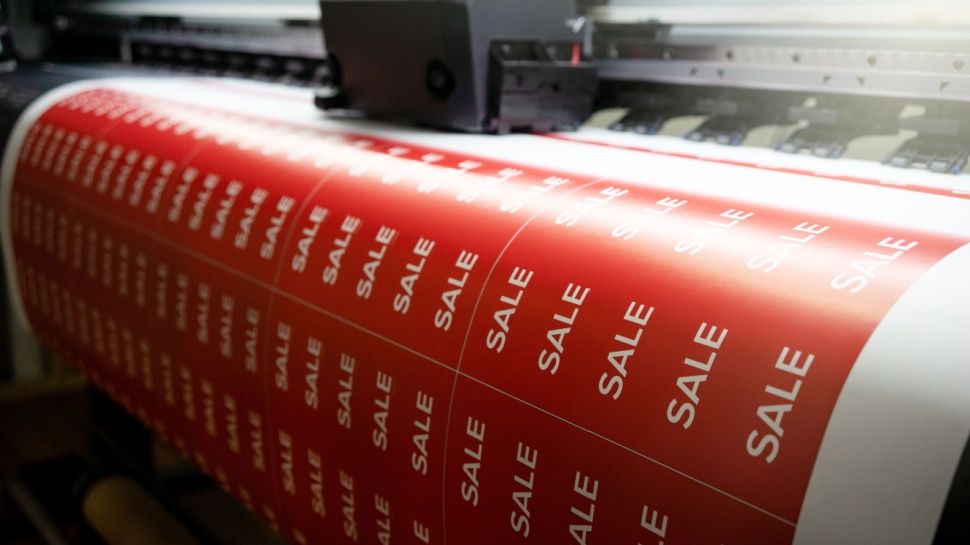

When it comes to printers, the price of ink cartridges often becomes a major factor for both home and office users. While a cartridge might appear affordable at first glance, the real cost lies in how much ink you’re getting for your money.
The price of an ink cartridge can be deceptive – as a cartridge that costs $20 may only contain 2ml of ink, which might print around 100 pages. In contrast, a $50 cartridge could contain 20ml of ink, enabling you to print 1,000 pages. While the $20 cartridge seems cheaper, it may end up costing more in the long run due to the need for frequent replacements.
To help shed light on the true cost of printing, I surveyed 100 ink cartridges using publicly available information from the official websites of four major brands: HP, Canon, Epson, and Brother.
The hidden costs of Ink cartridges
To accurately analyze the long-term cost of printing, we assessed the price per litre of ink rather than focusing on the upfront cartridge cost. This approach provides a clearer picture of how much users will spend over time, as it factors in the volume of ink and the total number of pages each cartridge can print.
Among the 100 cartridges surveyed, 31% were classified as cheap (< $1000 per litre), 51% as affordable (between $1000 and $5000), and 18% as expensive (> $5000). Interestingly, Canon and Epson each held a 35% share of the cheap ink data, with HP making up the remaining 30%. This suggests that all three brands ensure they have affordable options available.
However, Canon emerges as the leader in affordability, offering the world’s cheapest original ink by the bottle.
The Canon GI-290 stands out with a price of only $171.29 per litre, making it the most affordable option on the market. Additionally, Canon’s GI-25 series sells for just $9.99 per cartridge, translating to a price of $270 per litre making it also one of the most affordable in the surveyed data. These low prices highlight Canon’s focus on providing cost-effective printing solutions, especially for consumers who print frequently and want to minimize their ink expenses.
While HP is often perceived as a cheap brand, the data tells a different story when you look at the cost per litre of ink.
HP dominates the affordable ink category, with 53% of its cartridges falling between $1,001 and $5,000 per litre. Canon follows with 43% in this range, while Epson and Brother contribute just 2% each. Interestingly, 18% of the surveyed inks are expensive and HP takes the entire 18%. This means that the American tech company produces some of the most expensive ink cartridges in the world.
Although HP cartridges often sell for between $20 to $60, the price per litre can be extraordinarily high, making these cartridges some of the most expensive to use over time. For example, the HP 65 and 67 Tri-Colour cartridges have a staggering price per litre of $9,995 and $9,495 respectively, the highest in the entire dataset.
While some cartridges may seem expensive upfront, they can offer significant savings for users who print in high volumes.
Cartridges like the HP 32XL and Canon GI-290 have an exceptionally low price per page, effectively bringing the cost down to $0.00 in some cases. These cartridges are ideal for consumers who need to print large quantities of documents or photos, as they reduce the need for frequent cartridge replacements and save money in the long run.
High-capacity cartridges such as the Epson T636100 and Canon PFI-1000, which hold between 700ml and 800ml of ink, are also excellent choices for high-volume users. Though these cartridges have a higher upfront cost, their large capacity reduces the frequency of replacements and minimizes long-term costs.
Another interesting trend from the data is that black ink cartridges generally offer a lower cost per page and per litre compared to color cartridges.
Black ink is more commonly used for everyday document printing, which explains its lower cost. However, consumers who require color printing, such as for photos or graphics, face a much higher price per litre. For instance, color cartridges like HP 902 and Canon CL-276 have a much higher price per litre, especially for magenta, cyan, and yellow inks.
Users with frequent color printing needs may want to consider brands like Epson, which offers more affordable options for color ink. The Epson T664220-S cartridges in cyan, magenta, and yellow, for example, are priced at around $177 per litre, making them a reasonable option for those needing a balance between black and color ink costs.
The analysis reveals distinct strategies among the four brands: HP offers products across all three price categories—cheap, affordable, and expensive—but its high price per litre for some cartridges indicates a focus on short-term affordability at the expense of long-term savings. Canon, on the other hand, prioritizes cheap and affordable inks, making it the best choice for cost-conscious consumers. Epson primarily targets the cheap ink market, while Brother plays a smaller role overall, offering fewer options across the price spectrum.
If you print large volumes of document or you run a small business that requires heavy printing, then ink tank printers are the way to go. They are designed for designed for large volume of printing, offer lower costs per page and you do not need to refill regularly.
More from TechRadar Pro
-

 Science & Environment1 month ago
Science & Environment1 month agoHyperelastic gel is one of the stretchiest materials known to science
-

 Technology3 weeks ago
Technology3 weeks agoIs sharing your smartphone PIN part of a healthy relationship?
-

 Science & Environment1 month ago
Science & Environment1 month ago‘Running of the bulls’ festival crowds move like charged particles
-

 Science & Environment1 month ago
Science & Environment1 month agoMaxwell’s demon charges quantum batteries inside of a quantum computer
-

 Science & Environment1 month ago
Science & Environment1 month agoHow to unsnarl a tangle of threads, according to physics
-

 Technology1 month ago
Technology1 month agoWould-be reality TV contestants ‘not looking real’
-

 Science & Environment4 weeks ago
Science & Environment4 weeks agoX-rays reveal half-billion-year-old insect ancestor
-

 Science & Environment1 month ago
Science & Environment1 month agoLiquid crystals could improve quantum communication devices
-

 Science & Environment1 month ago
Science & Environment1 month agoQuantum ‘supersolid’ matter stirred using magnets
-

 Science & Environment1 month ago
Science & Environment1 month agoSunlight-trapping device can generate temperatures over 1000°C
-

 Womens Workouts4 weeks ago
Womens Workouts4 weeks ago3 Day Full Body Women’s Dumbbell Only Workout
-

 Science & Environment1 month ago
Science & Environment1 month agoWhy this is a golden age for life to thrive across the universe
-

 Science & Environment1 month ago
Science & Environment1 month agoQuantum forces used to automatically assemble tiny device
-

 Science & Environment1 month ago
Science & Environment1 month agoLaser helps turn an electron into a coil of mass and charge
-

 Science & Environment1 month ago
Science & Environment1 month agoNerve fibres in the brain could generate quantum entanglement
-

 Science & Environment1 month ago
Science & Environment1 month agoHow to wrap your mind around the real multiverse
-

 Science & Environment1 month ago
Science & Environment1 month agoA slight curve helps rocks make the biggest splash
-

 Science & Environment1 month ago
Science & Environment1 month agoITER: Is the world’s biggest fusion experiment dead after new delay to 2035?
-

 Science & Environment1 month ago
Science & Environment1 month agoA new kind of experiment at the Large Hadron Collider could unravel quantum reality
-

 News1 month ago
News1 month ago▶️ Hamas in the West Bank: Rising Support and Deadly Attacks You Might Not Know About
-
News1 month ago
the pick of new debut fiction
-

 Technology3 weeks ago
Technology3 weeks agoUkraine is using AI to manage the removal of Russian landmines
-

 TV2 weeks ago
TV2 weeks agoসারাদেশে দিনব্যাপী বৃষ্টির পূর্বাভাস; সমুদ্রবন্দরে ৩ নম্বর সংকেত | Weather Today | Jamuna TV
-
Business3 weeks ago
DoJ accuses Donald Trump of ‘private criminal effort’ to overturn 2020 election
-

 Science & Environment1 month ago
Science & Environment1 month agoTime travel sci-fi novel is a rip-roaringly good thought experiment
-

 News4 weeks ago
News4 weeks agoOur millionaire neighbour blocks us from using public footpath & screams at us in street.. it’s like living in a WARZONE – WordupNews
-

 Technology4 weeks ago
Technology4 weeks agoWhy Machines Learn: A clever primer makes sense of what makes AI possible
-

 News1 month ago
News1 month ago▶️ Media Bias: How They Spin Attack on Hezbollah and Ignore the Reality
-

 Science & Environment1 month ago
Science & Environment1 month agoNuclear fusion experiment overcomes two key operating hurdles
-

 Business2 weeks ago
Business2 weeks agoWhen to tip and when not to tip
-

 Technology3 weeks ago
Technology3 weeks agoMicrophone made of atom-thick graphene could be used in smartphones
-

 News2 weeks ago
News2 weeks agoNavigating the News Void: Opportunities for Revitalization
-

 Technology3 weeks ago
Technology3 weeks agoThis AI video generator can melt, crush, blow up, or turn anything into cake
-

 News2 weeks ago
News2 weeks agoMassive blasts in Beirut after renewed Israeli air strikes
-

 Sport2 weeks ago
Sport2 weeks agoWales fall to second loss of WXV against Italy
-

 Science & Environment1 month ago
Science & Environment1 month agoPhysicists have worked out how to melt any material
-

 Science & Environment1 month ago
Science & Environment1 month agoPhysicists are grappling with their own reproducibility crisis
-

 MMA3 weeks ago
MMA3 weeks agoJulianna Peña trashes Raquel Pennington’s behavior as champ
-

 News2 weeks ago
News2 weeks ago▶ Hamas Spent $1B on Tunnels Instead of Investing in a Future for Gaza’s People
-

 TV2 weeks ago
TV2 weeks agoLove Island star sparks feud rumours as one Islander is missing from glam girls’ night
-

 Sport2 weeks ago
Sport2 weeks agoCoco Gauff stages superb comeback to reach China Open final
-

 Sport3 weeks ago
Sport3 weeks agoWorld’s sexiest referee Claudia Romani shows off incredible figure in animal print bikini on South Beach
-

 Sport3 weeks ago
Sport3 weeks agoSturm Graz: How Austrians ended Red Bull’s title dominance
-

 Technology2 weeks ago
Technology2 weeks agoSamsung Passkeys will work with Samsung’s smart home devices
-

 Football3 weeks ago
Football3 weeks agoRangers & Celtic ready for first SWPL derby showdown
-

 News2 weeks ago
News2 weeks agoHeavy strikes shake Beirut as Israel expands Lebanon campaign
-
Business3 weeks ago
Eurosceptic Andrej Babiš eyes return to power in Czech Republic
-

 News1 month ago
News1 month agoYou’re a Hypocrite, And So Am I
-

 News2 weeks ago
News2 weeks agoHeartbreaking end to search as body of influencer, 27, found after yacht party shipwreck on ‘Devil’s Throat’ coastline
-

 Sport2 weeks ago
Sport2 weeks agoBoxing: World champion Nick Ball set for Liverpool homecoming against Ronny Rios
-

 News2 weeks ago
News2 weeks agoHull KR 10-8 Warrington Wolves – Robins reach first Super League Grand Final
-

 Sport1 month ago
Sport1 month agoJoshua vs Dubois: Chris Eubank Jr says ‘AJ’ could beat Tyson Fury and any other heavyweight in the world
-

 Science & Environment1 month ago
Science & Environment1 month agoRethinking space and time could let us do away with dark matter
-

 Science & Environment1 month ago
Science & Environment1 month agoCaroline Ellison aims to duck prison sentence for role in FTX collapse
-

 Science & Environment1 month ago
Science & Environment1 month agoA tale of two mysteries: ghostly neutrinos and the proton decay puzzle
-

 Technology3 weeks ago
Technology3 weeks agoUniversity examiners fail to spot ChatGPT answers in real-world test
-

 Health & fitness1 month ago
Health & fitness1 month agoThe secret to a six pack – and how to keep your washboard abs in 2022
-

 News1 month ago
News1 month agoNew investigation ordered into ‘doorstep murder’ of Alistair Wilson
-
News1 month ago
The Project Censored Newsletter – May 2024
-

 Technology4 weeks ago
Technology4 weeks agoMeta has a major opportunity to win the AI hardware race
-

 Technology3 weeks ago
Technology3 weeks agoQuantum computers may work better when they ignore causality
-

 Sport3 weeks ago
Sport3 weeks agoWatch UFC star deliver ‘one of the most brutal knockouts ever’ that left opponent laid spark out on the canvas
-

 MMA3 weeks ago
MMA3 weeks agoDana White’s Contender Series 74 recap, analysis, winner grades
-

 TV3 weeks ago
TV3 weeks agoPhillip Schofield accidentally sets his camp on FIRE after using emergency radio to Channel 5 crew
-

 News2 weeks ago
News2 weeks agoGerman Car Company Declares Bankruptcy – 200 Employees Lose Their Jobs
-

 Technology2 weeks ago
Technology2 weeks agoTexas is suing TikTok for allegedly violating its new child privacy law
-

 TV2 weeks ago
TV2 weeks agoMaayavi (මායාවී) | Episode 23 | 02nd October 2024 | Sirasa TV
-

 Money2 weeks ago
Money2 weeks agoWhy thousands of pensioners WON’T see State Pension rise by full £460 next year
-

 Technology2 weeks ago
Technology2 weeks agoA very underrated horror movie sequel is streaming on Max
-
Business3 weeks ago
Bank of England warns of ‘future stress’ from hedge fund bets against US Treasuries
-

 Business3 weeks ago
Business3 weeks agoChancellor Rachel Reeves says she needs to raise £20bn. How might she do it?
-

 Technology2 weeks ago
Technology2 weeks agoAmazon’s Ring just doubled the price of its alarm monitoring service for grandfathered customers
-

 Technology2 weeks ago
Technology2 weeks agoMusk faces SEC questions over X takeover
-

 MMA2 weeks ago
MMA2 weeks agoPereira vs. Rountree prediction: Champ chases legend status
-

 Technology2 weeks ago
Technology2 weeks agoPopular financial newsletter claims Roblox enables child sexual abuse
-

 News2 weeks ago
News2 weeks agoFamily plans to honor hurricane victim using logs from fallen tree that killed him
-

 MMA2 weeks ago
MMA2 weeks agoPereira vs. Rountree preview show live stream
-

 Politics2 weeks ago
Politics2 weeks agoHochul’s careful conversations
-

 News2 weeks ago
News2 weeks agoBalancing India and China Is the Challenge for Sri Lanka’s Dissanayake
-

 Technology2 weeks ago
Technology2 weeks agoThe best shows on Max (formerly HBO Max) right now
-

 MMA2 weeks ago
MMA2 weeks ago‘Uncrowned queen’ Kayla Harrison tastes blood, wants UFC title run
-

 Sport2 weeks ago
Sport2 weeks agoMan City ask for Premier League season to be DELAYED as Pep Guardiola escalates fixture pile-up row
-

 Football1 month ago
Football1 month agoMike Williamson: Carlisle United appoint MK Dons boss as head coach
-

 Servers computers4 weeks ago
Servers computers4 weeks agoWhat are the benefits of Blade servers compared to rack servers?
-

 Technology3 weeks ago
Technology3 weeks agoArtificial flavours released by cooking aim to improve lab-grown meat
-
Business3 weeks ago
Should London’s tax exiles head for Spain, Italy . . . or Wales?
-

 MMA3 weeks ago
MMA3 weeks agoConor McGregor challenges ‘woeful’ Belal Muhammad, tells Ilia Topuria it’s ‘on sight’
-
Politics1 month ago
UK consumer confidence falls sharply amid fears of ‘painful’ budget | Economics
-

 Technology4 weeks ago
Technology4 weeks agoRobo-tuna reveals how foldable fins help the speedy fish manoeuvre
-

 Technology3 weeks ago
Technology3 weeks ago‘From a toaster to a server’: UK startup promises 5x ‘speed up without changing a line of code’ as it plans to take on Nvidia, AMD in the generative AI battlefield
-

 Football3 weeks ago
Football3 weeks agoFootball Focus: Martin Keown on Liverpool’s Alisson Becker
-

 Technology3 weeks ago
Technology3 weeks agoEpic Games CEO Tim Sweeney renews blast at ‘gatekeeper’ platform owners
-

 MMA3 weeks ago
MMA3 weeks agoAlex Pereira faces ‘trap game’ vs. Khalil Rountree
-

 Football3 weeks ago
Football3 weeks agoSimo Valakari: New St Johnstone boss says Scotland special in his heart
-
Business3 weeks ago
LVMH strikes sponsorship deal with Formula 1
-
Business2 weeks ago
CEOs turn to podcasts to control their message
-

 News2 weeks ago
News2 weeks ago‘Blacks for Trump’ and Pennsylvania progressives play for undecided voters
-

 News2 weeks ago
News2 weeks agoReach CEO Jim Mullen: If government advertises with us, we’ll employ more reporters
-
Business2 weeks ago
Maurice Terzini’s insider guide to Sydney
-
Politics2 weeks ago
Rosie Duffield’s savage departure raises difficult questions for Keir Starmer. He’d be foolish to ignore them | Gaby Hinsliff

You must be logged in to post a comment Login